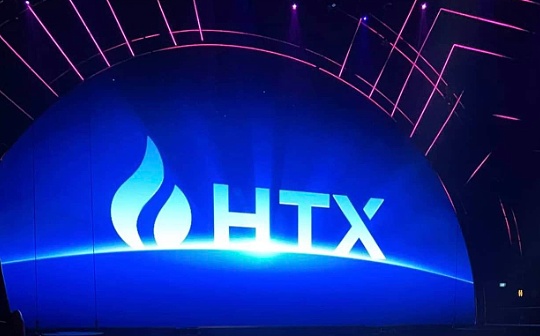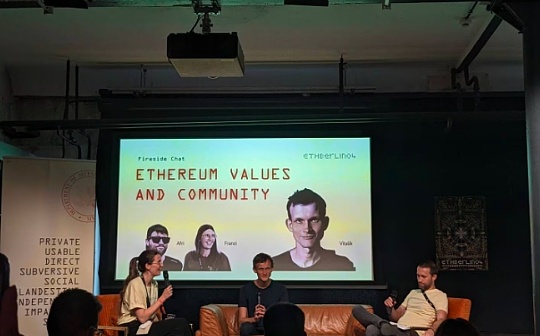
Author: Liam Kelly, DL News; Compilation: Tao Zhu, Bitchain Vision
summary:
-
Ethereum architects share their views on smart contracts, EVMs and other features.
-
Buterin said Ethereum developers should launch proof of stake earlier.
-
With the emergence of ETFs, Ethereum is going mainstream.
Last week, at this year’s ETHBerlin event, 620 exhausted developers appeared after three days of uninterrupted coding, and few people expected Vitalik Buterin to speak on stage.
Ethereum’s co-founder and chief architect was an unexpected guest.
What is even more surprising is his thoughts on building the second largest blockchain in the industry.Buterin describes in detail some of his regrets about Ethereum’s initial design.
For many listeners, his speech not only evokes the good times that the network was born in 2014, but also helps plan a roadmap for the future of the current $448 billion cryptocurrency.
The United States has just approved the Ethereum spot exchange-traded fund, and BlackRock, the world’s largest asset management company, has also launched its own tokenized fund on the blockchain.
The Ethereum network has spawned a huge ecosystem of developers and financial applications worth over $63 billion, and it has become synonymous with decentralized finance.
Nevertheless, 30-year-old Canadian-Russian programmer Buterin said he listedA series of things he could have done differently.These things include the development of Ethereum virtual machines, smart contracts and proof of stake consensus mechanisms.
He also pointed out that even if Ethereum becomes more mainstream, it is still misunderstood.
“The narrative of Bitcoin is very simple, it is digital gold,” Buterin said.“But like Ethereum, people ask ‘Wow, what exactly is Ethereum?’”
Buterin sat on the comfortable sofa on the stage with ETHBerlin organizers Afri Schoedon and Franziska Heintel, and shared his best memories of the German capital over the years at the beginning of the chat – with Ethereum co-founders Gavin Wood and Jeffrey Wilcke in the oldHacking in the office, launching Devcon Zero and celebrating the Merge upgrade in 2022.
Then Schoedon asked a question.
“With everything you know and everything you’ve learned over the past 10 years, how would you build Ethereum in a different way if you could start from scratch?”Schoeden asked.
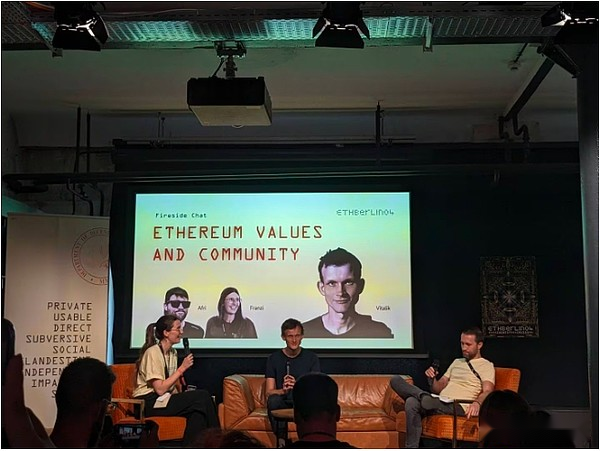
Vitalik Buterin (Chinese) discusses Ethereum’s vision, both past and present, in ETHBerlin’s discussion.Image source: Liam Kelly/DL News.
Ethereum virtual machine
Buterin’s first doubt is related to Ethereum’s virtual machines.Virtual machines are the key to making the network a kind of decentralized giant encrypted computer.
He explained that Ethereum’s original EVM design used 256-bit processing instead of 64-bit or 32-bit.
In computer architecture, the size calculated is in units of bits. The larger the bit, the higher the efficiency, and the more data it processes.But 256-bit is very inefficient for most operations, and even simple tasks can bring a lot of bloat to the blockchain.
For early networks, Ethereum did not need to be optimized for this.
“The original design was so suitable for 256,” Buterin told the audience.
Optimize smart contracts
Secondly, Buterin said,Early Ethereum developers should focus on making writing smart contracts easier and with fewer lines of code.
What is the reason?Increase transparency.
He saidThe fewer lines of code are, “people can correctly see and check what’s happening inside the contract.”

Volunteers and developers play music at the Berlin hackathon.Image source: ETHBerlin.
Switch to the “worse” staking version
Instead of using custom computers (called miners) to run uninterruptedly to protect the blockchain network, Ethereum switches to another mode.
Buterin said,Ethereum switched from a proof of work consensus mechanism (the way nodes in the blockchain agree on the state of transaction data) to a proof of stake in 2022, which should have happened earlier.
“When we switch to proof of stake, we should switch to a slightly worse proof of stake version early,” he said.“We ended up wasting a lot of time trying to make the proof of stake perfect.”
Now, Ethereum is no longer guaranteed by miners, but by validators, who staked 32 Ethereums (worth about $124,000) to do the same and received a reward for it.For example, if they act improperly by verifying fraudulent transactions, they will be punished.
Anyway,This shift replaces original, energy-intensive computing power with economic incentives.
“If we had a simpler proof of stake in 2018, we could have saved a lot of trees,” Buterin said.
Log release starts on day one
From large token transfers to backdoor honeypots, users can easily track funds in cryptocurrencies.This is partly due to automatic recording.
But as the industry grows, especially from externally owned accounts like MetaMask to smart wallets like Safe, some key records are lost.
It is worth noting that the automatic logs transmitted by Ether.
“It should have been there from the beginning,” Buterin said.”I, Gav and Jeff could have spent 30 minutes writing code. Instead, it was an EIP.”
The Ethereum improvement proposal is a formal proposal proposed by developers to change certain aspects of the Ethereum network.
Buterin’s EIP-7708 filed on May 17 will make this precise change.
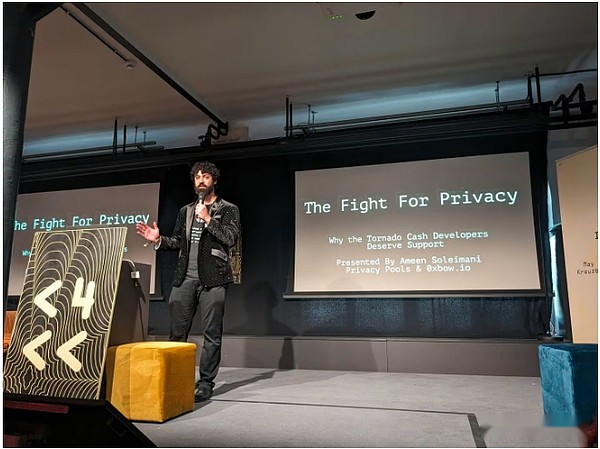
Ameen Soleimani, 0xbow strategic consultant, MolochDAO and Reflexer Finance co-founder, is discussing the Tornado Cash case.Image source: Liam Kelly/DL News.
Give up Keccak and use SHA-2
Buterin also said,He will use SHA-2 as the hash function for Ethereum, rather than the one currently called Keccak.
To understand the differences, it is necessary to have a deep understanding of some cryptography, especially about how SHA-3 becomes the standard.Remember that before cryptocurrency became synonymous with celebrity memecoin and nine-digit ICs, it was related to complex mathematics.
When building Ethereum, the hash value it uses is in the “hash function contest” – yes, that’s one thing.
The National Institute of Standards and Technology organized the competition to create new hash standards outside of SHA-2.
Previous standards have been attacked and debunked.But SHA-2 is unscathed and NIST just wants a safe alternative.After all, diversity is a condiment for life (and obviously a condiment for cryptography).
Keccak is just one of several contestants who participated in the competition.During the game, the team made some minor changes to its algorithm, which ultimately made them champions.
However, the early Ethereum team has implemented a non-standardized version of Keccak.Ethereum essentially uses iterations before SHA-3.
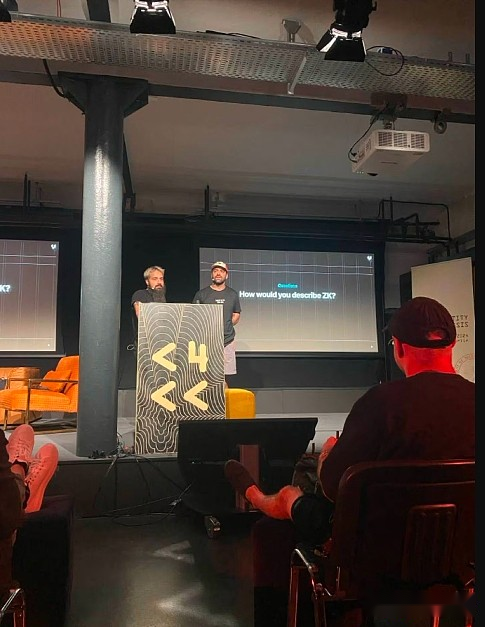
ChainSafe Co-founder and Chief Product Officer Gregory Markou and Phylax Systems Founder and CEO Odysseas Lamtzidis speak on ETHBerlin.Image source: ETHBerlin
It’s very troublesome, right?
Um,This means that Ethereum developers need a custom library (a collection of reusable code without rewriting from scratch) to adapt to both SHA-3 and Keccak.
“We are incompatible with other systems that use SHA-3,” Marius van der Wijden, Ethereum core developer, told DL News.“We have to support both algorithms in EVM.”
This problem has basically been solved.Today, large libraries support both encryption mechanisms.
So, yes, it’s really troublesome.
“In the big picture, it doesn’t matter, and the current development is certainly not going to be affected,” van der Wijden said.
Ethereum team
Despite a series of small design mistakes, Buterin said that there will inevitably be some mistakes in any project.
“I’m really happy that our core developers and their execution capabilities seem to be improving every year,” he said.
“We are able to correct some of these errors effectively and safely.”

